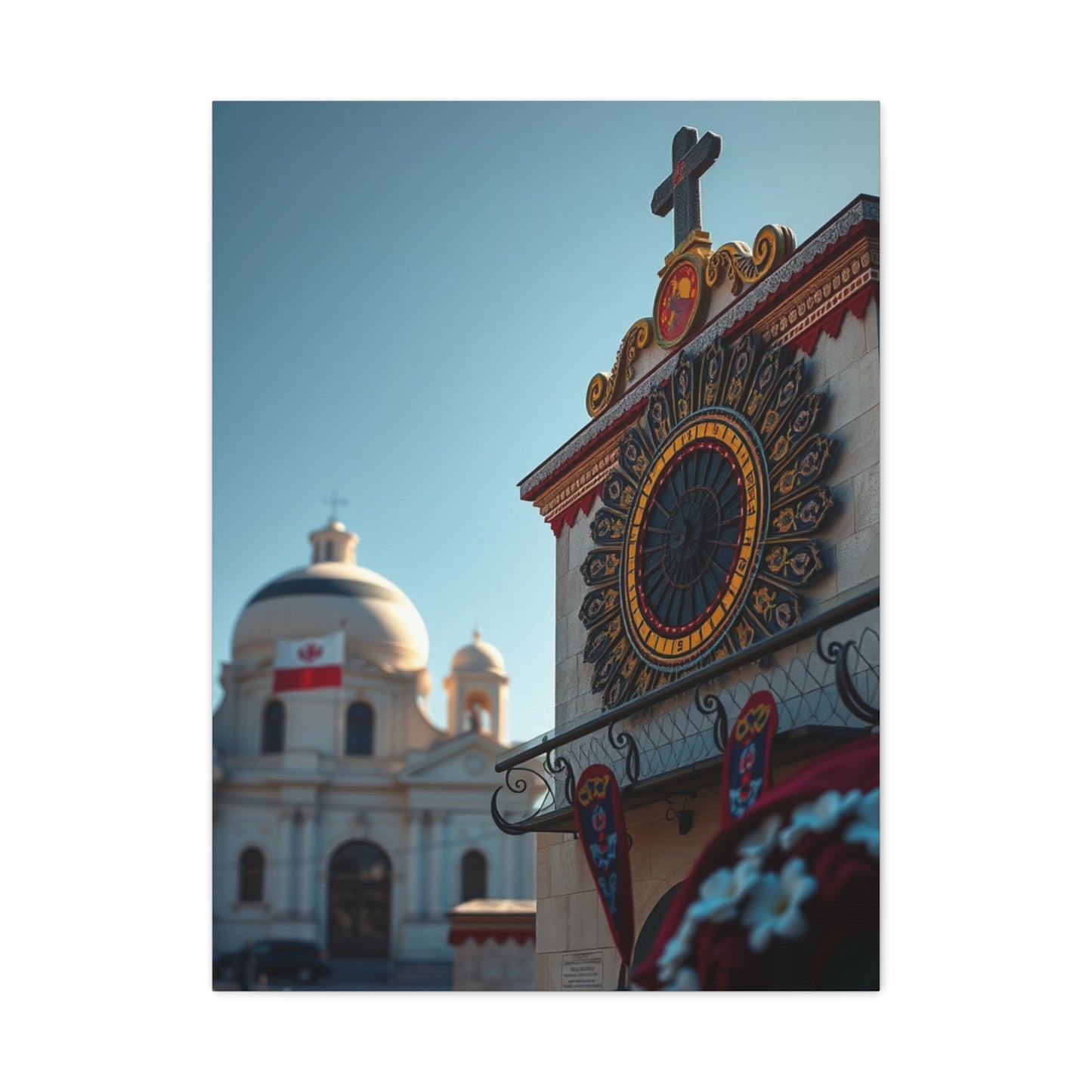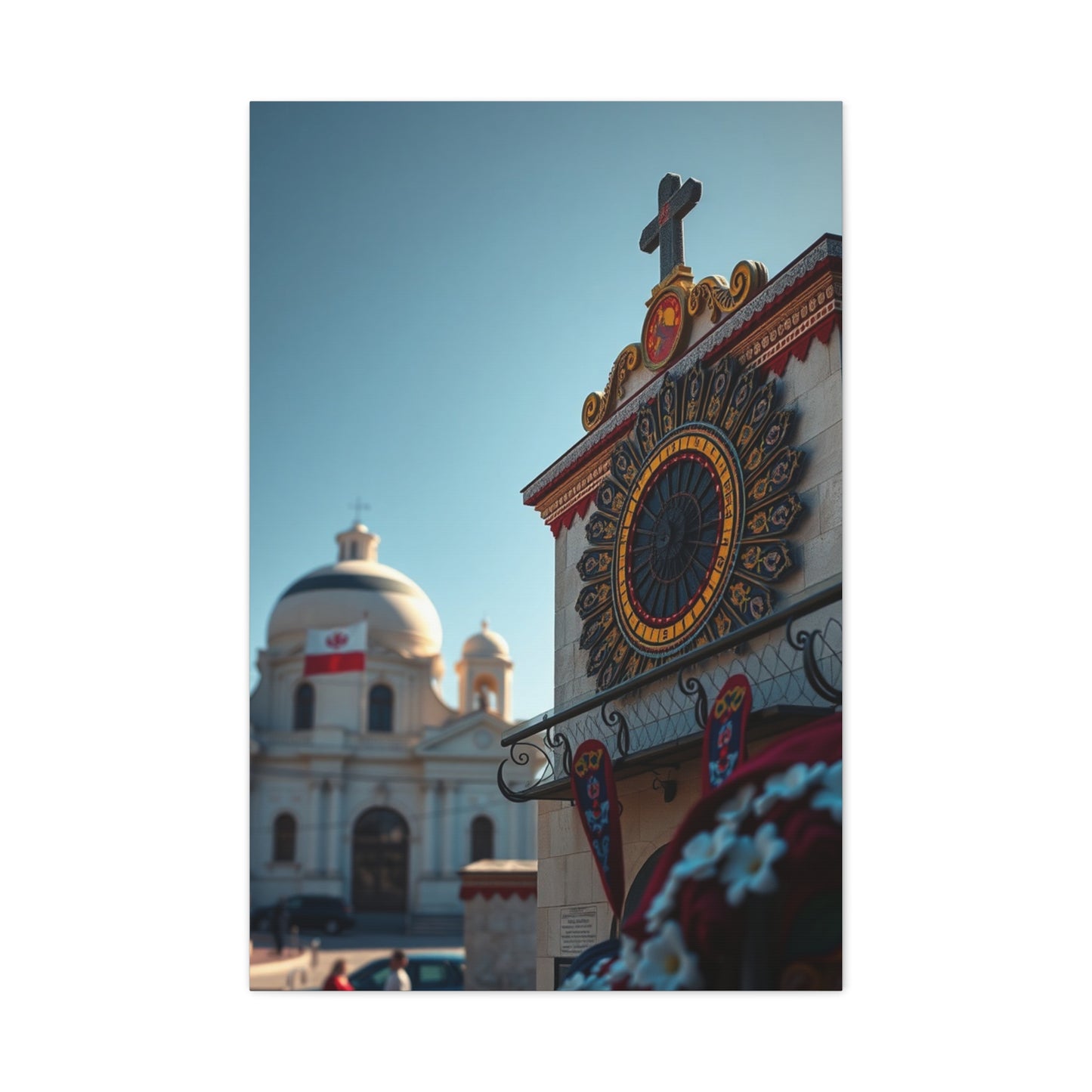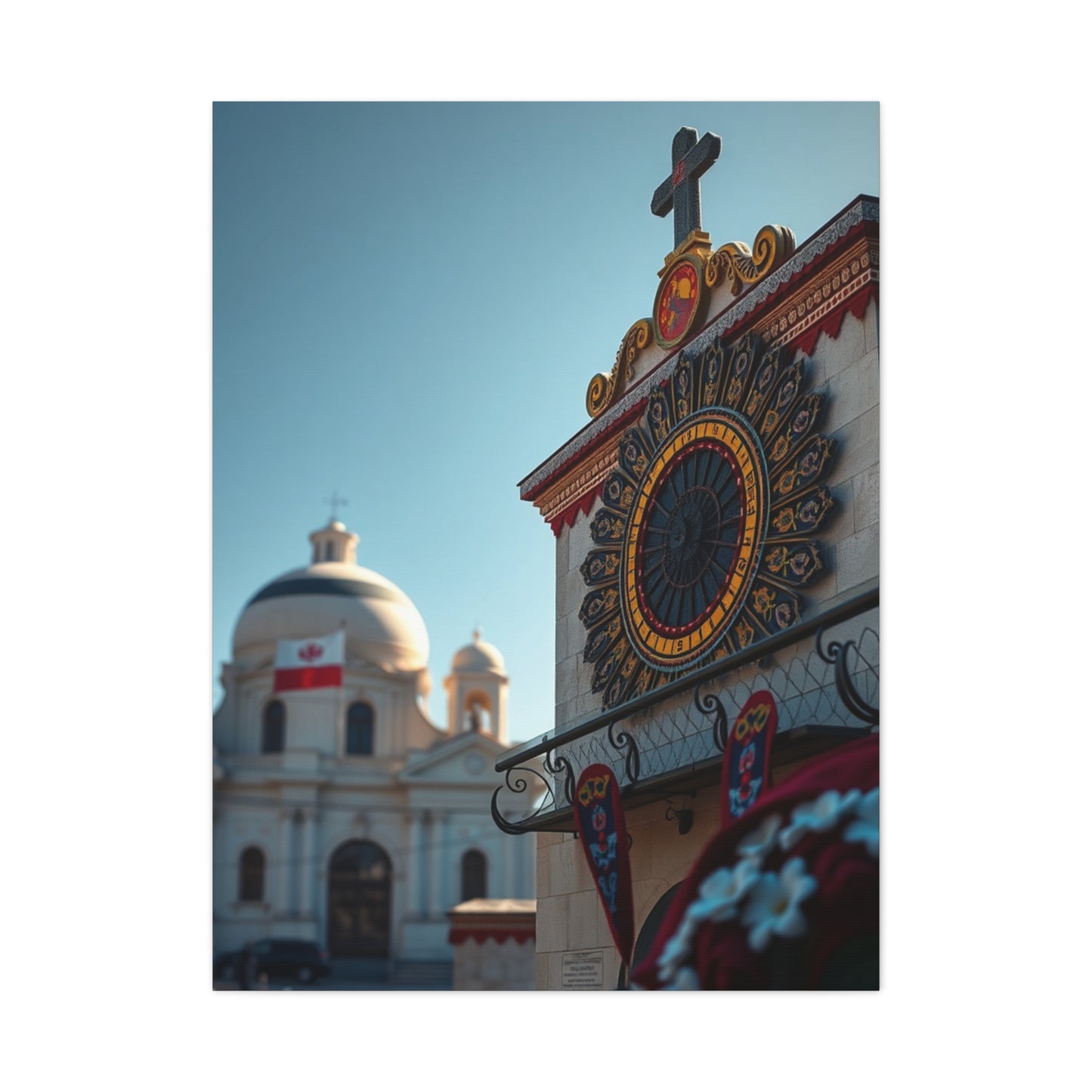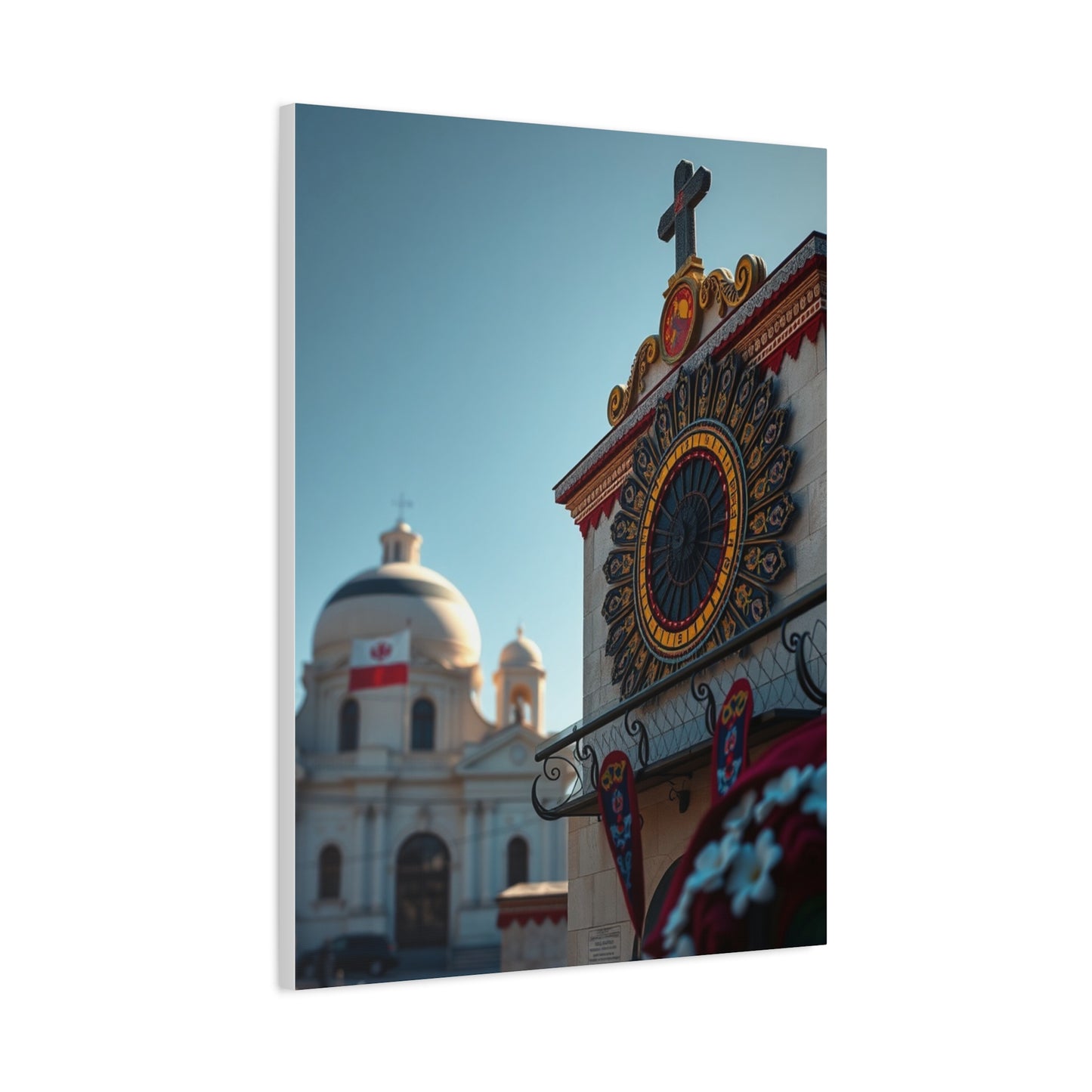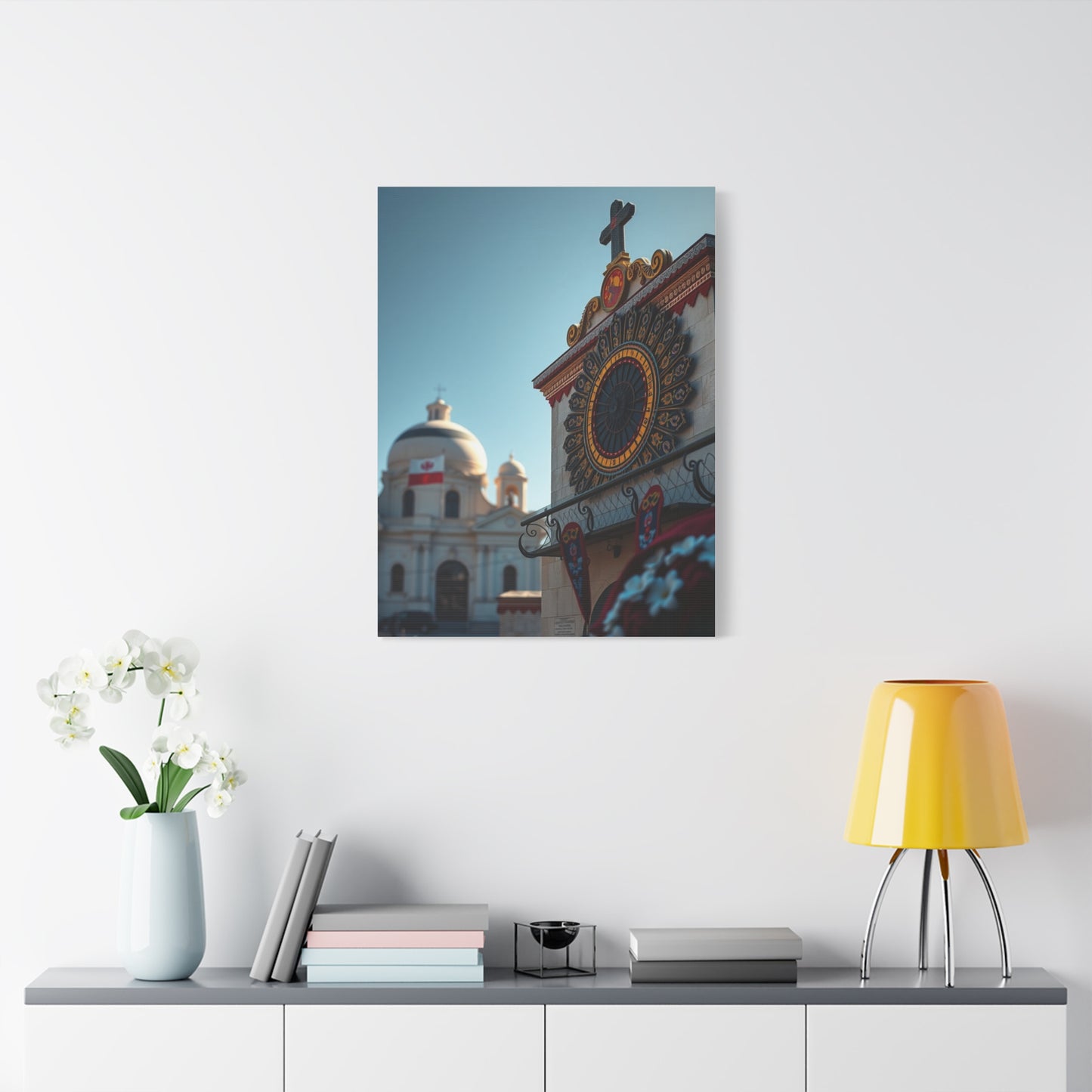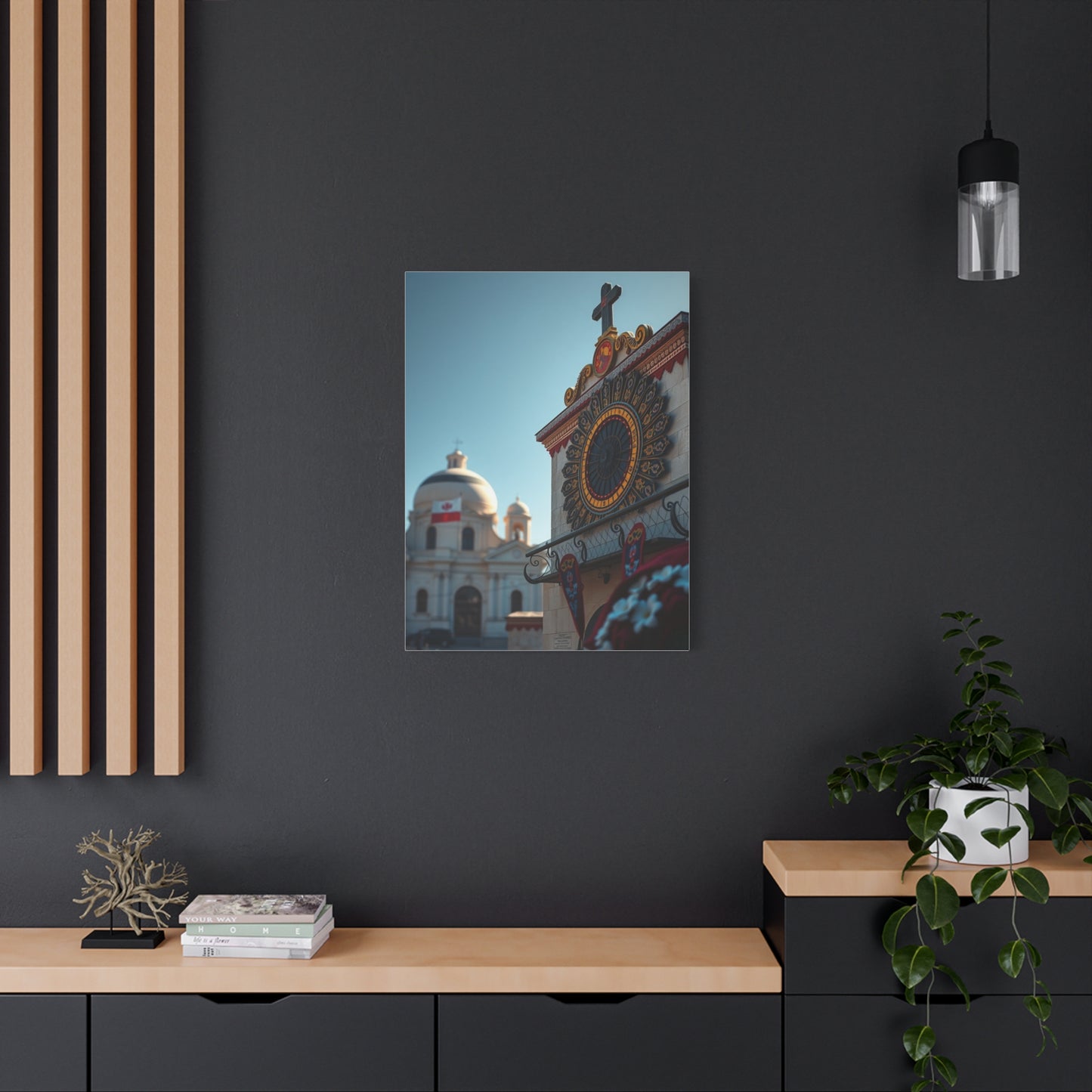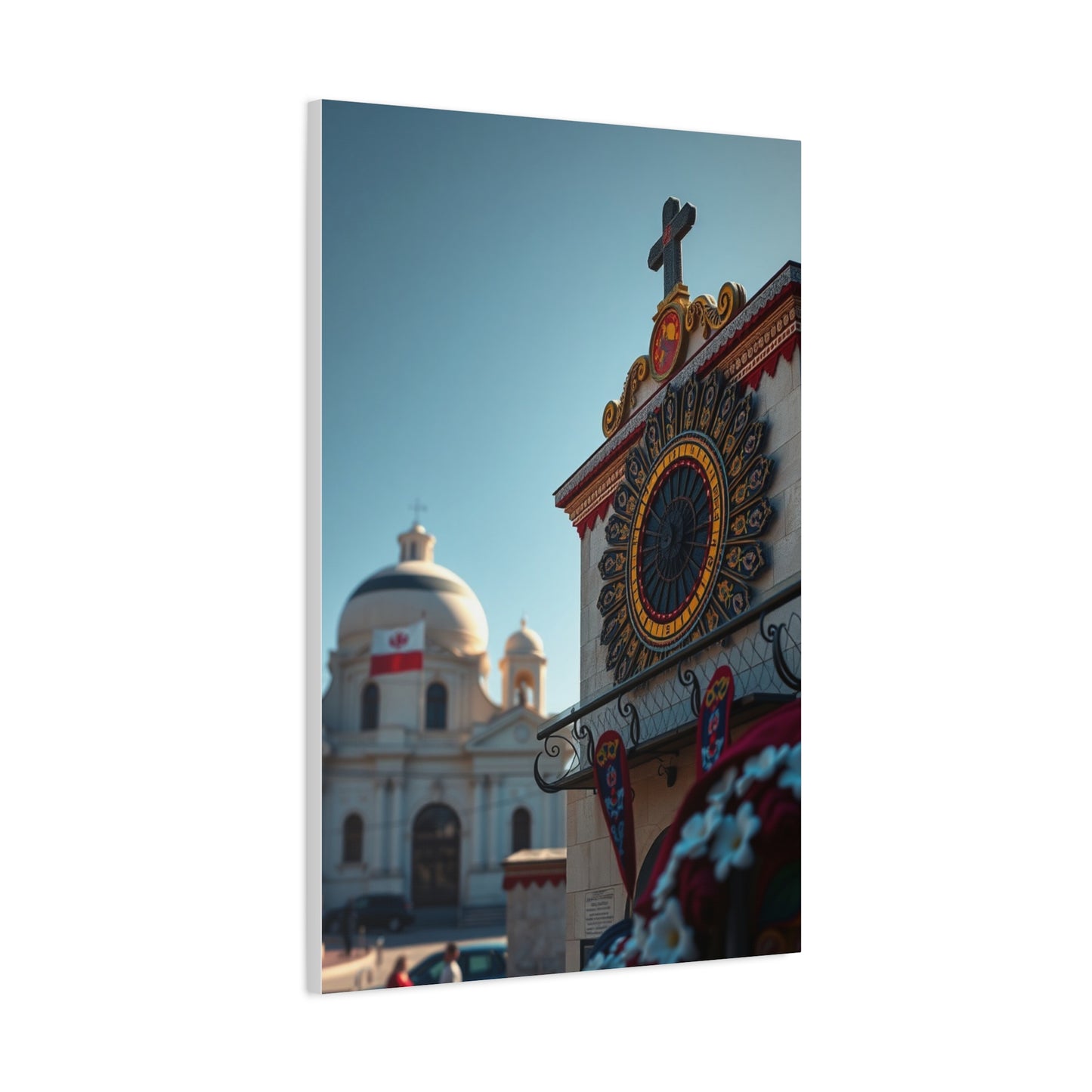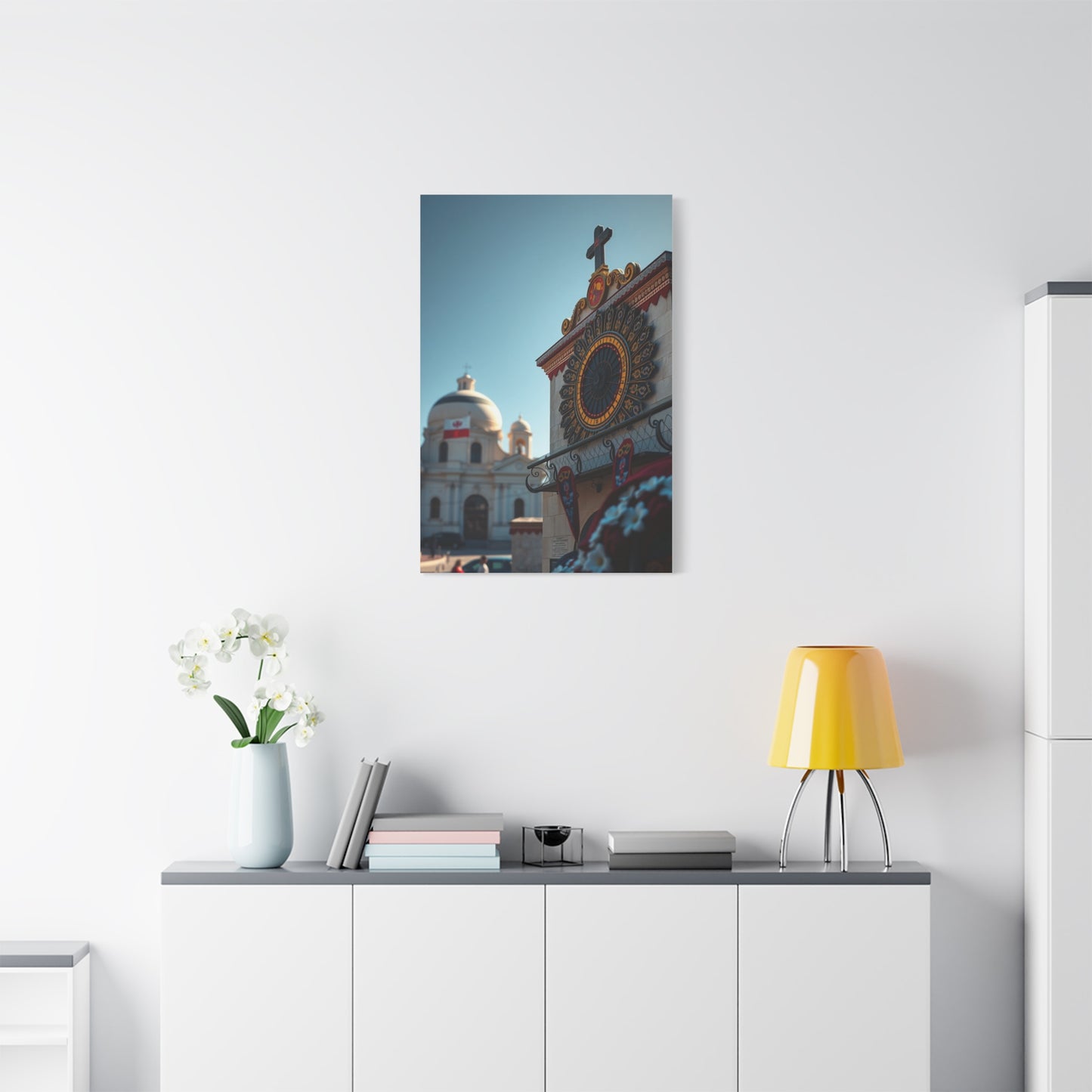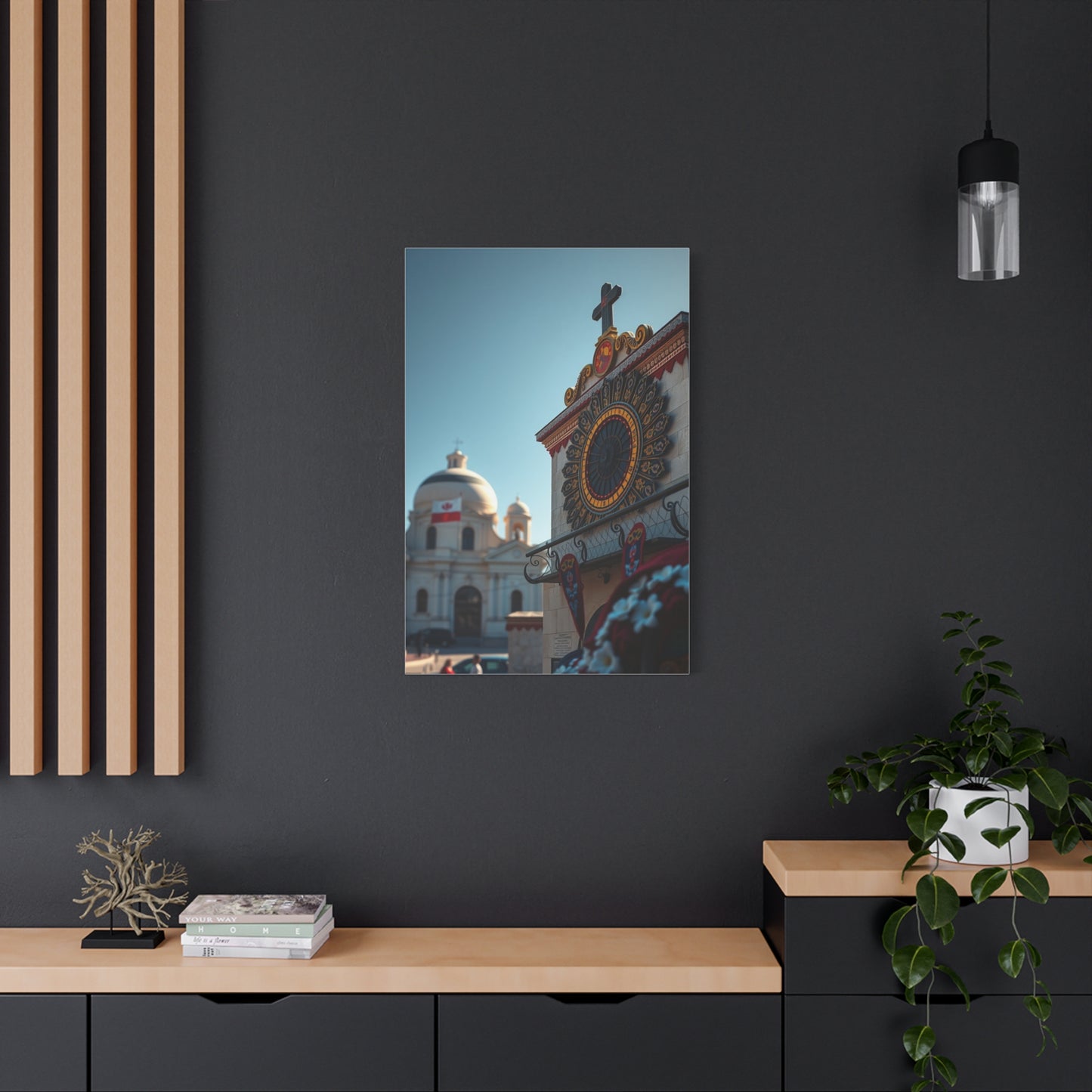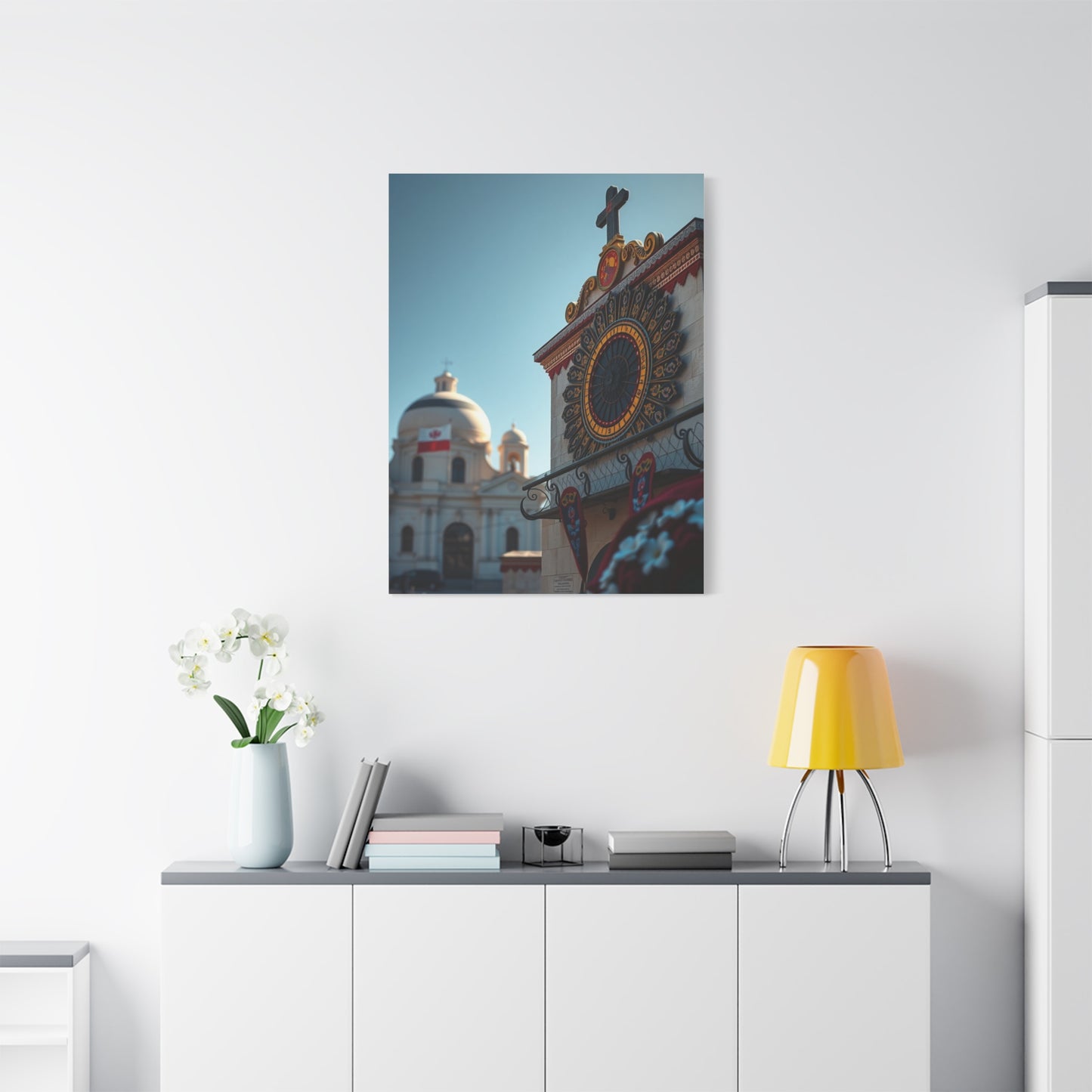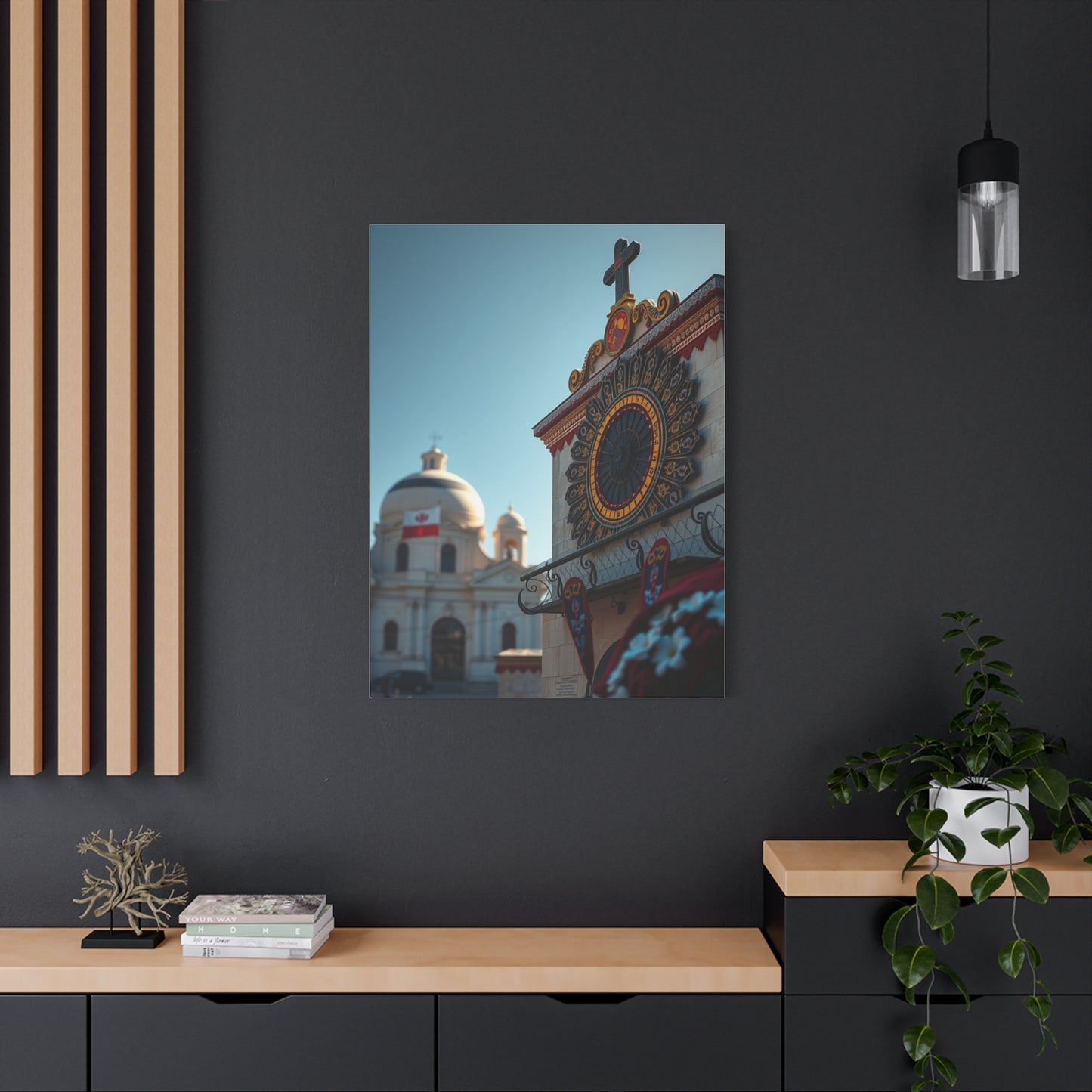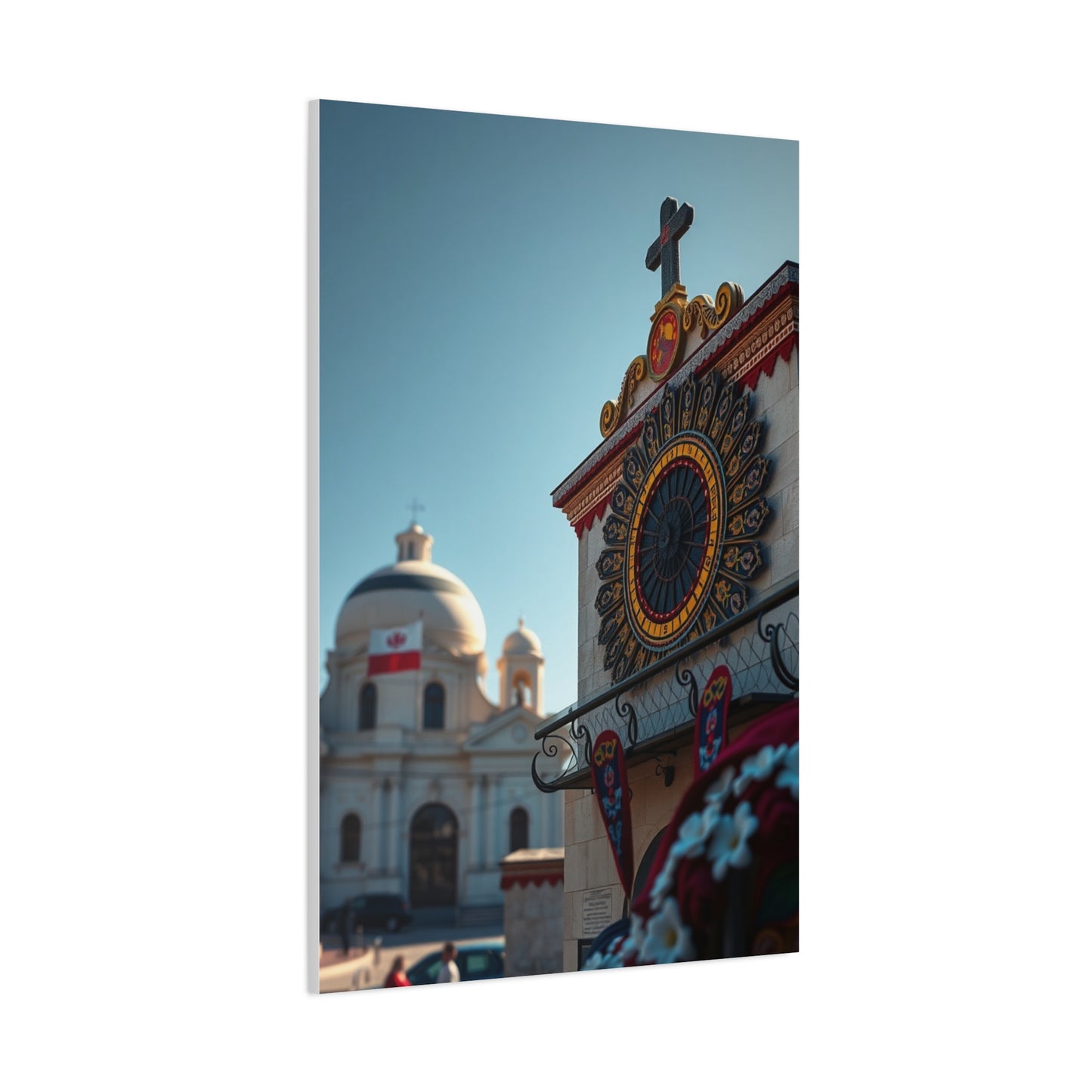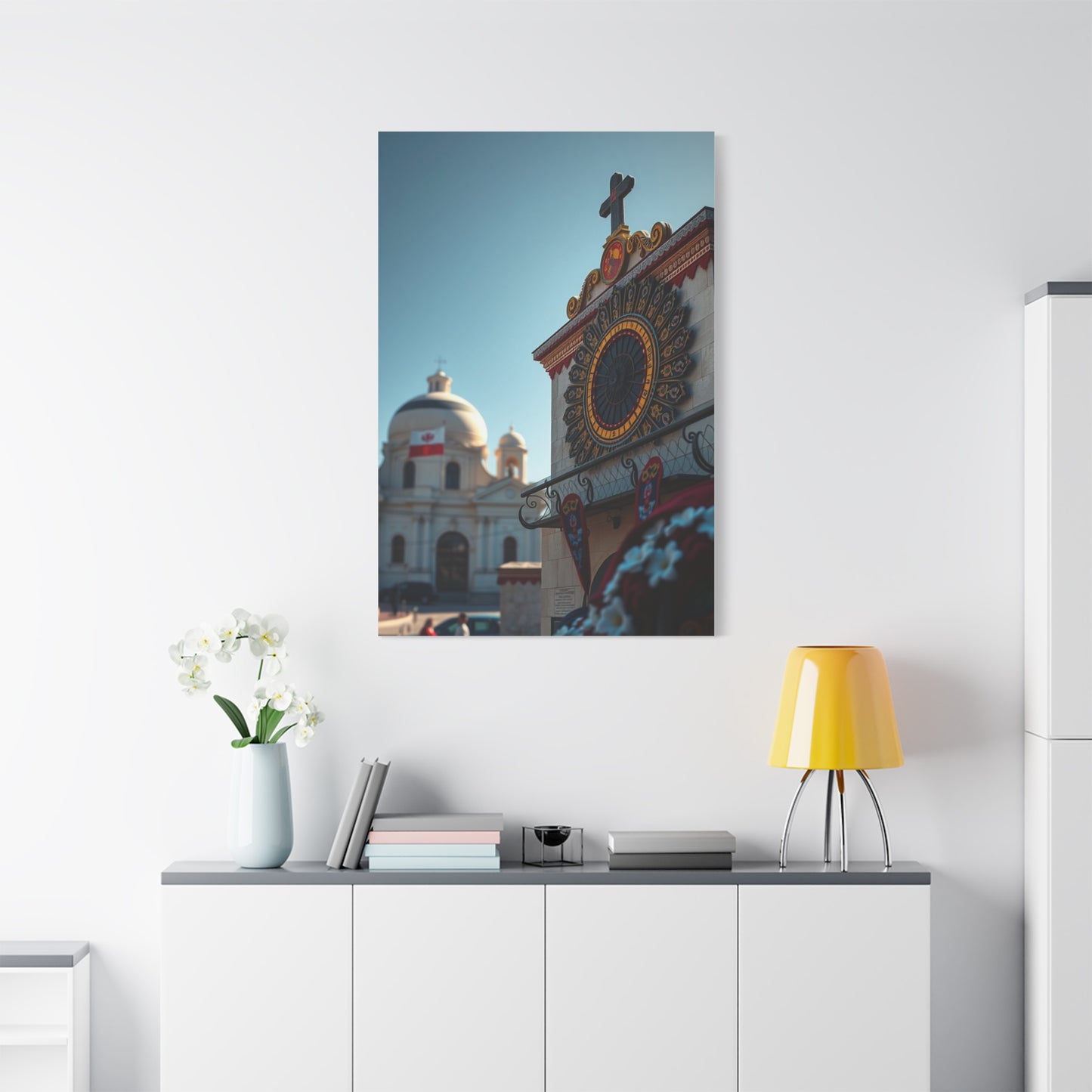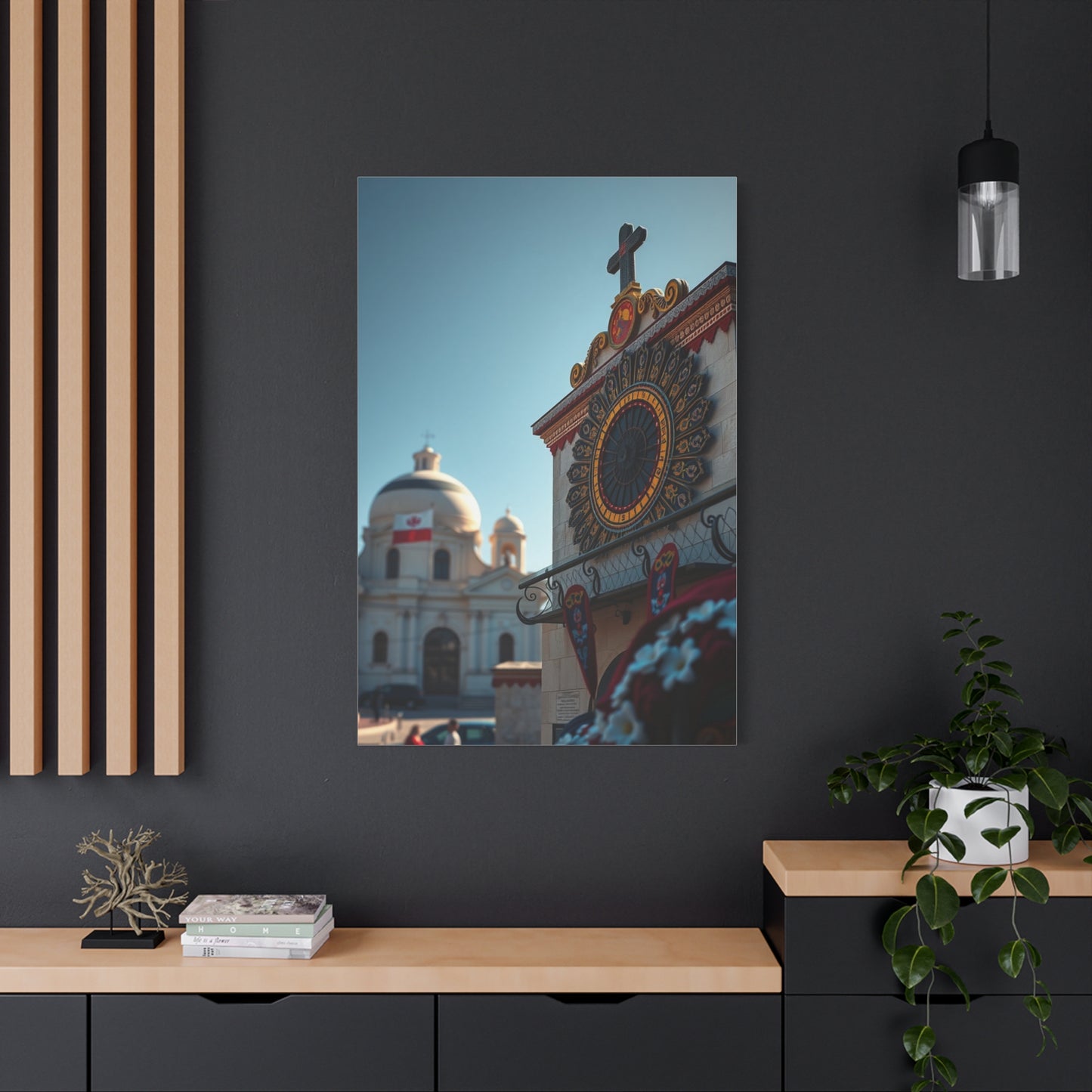The Art of the Aztecs: How Aztec Reverie Wall Art Honors Ancient Traditions While Embracing Contemporary Design
The powerful imagery and intricate designs of ancient Mesoamerican civilizations continue to captivate contemporary audiences through stunning wall art that bridges centuries of cultural heritage. The visual language developed by these pre-Columbian societies represents far more than mere decoration; it embodies a sophisticated understanding of cosmology, spirituality, and the natural world that remains relevant in modern interior spaces. When we examine the foundational elements that inform contemporary interpretations of this artistic tradition, we discover a rich tapestry of meaning woven through geometric precision, symbolic representation, and vibrant color palettes that speak to universal human experiences.
The artistic expressions that emerged from the Valley of Mexico between the 14th and 16th centuries reflect a civilization at the height of its cultural and intellectual development. These visual narratives were never created simply for aesthetic pleasure but served as complex communication systems that conveyed religious beliefs, historical records, astronomical knowledge, and social hierarchies. The symbols and patterns that adorned temple walls, codices, and ceremonial objects were deeply intentional, with each element carrying specific meanings understood by those initiated into the cultural framework. This intentionality transforms what might appear as abstract decoration into a sophisticated visual language that modern interpretations honor and recontextualize for contemporary living spaces.
Understanding the historical context behind these artistic traditions enriches our appreciation for how they translate into modern wall art. The civilization that flourished in central Mexico developed distinctive artistic conventions that distinguished their visual culture from neighboring societies. Their approach to representation favored symbolic meaning over realistic depiction, creating stylized forms that captured essential qualities rather than photographic accuracy. This emphasis on symbolic representation allows contemporary artists to work within an established visual vocabulary while bringing fresh perspectives that resonate with modern sensibilities. The geometric patterns, stylized animal forms, and cosmological symbols that characterize this artistic tradition possess an inherent versatility that adapts beautifully to various interior design contexts.
The color symbolism embedded within traditional artistic practices adds another layer of depth to contemporary interpretations. The ancient artisans who created temple murals and illustrated manuscripts worked with a deliberate color palette where each hue carried specific associations and meanings. Turquoise connected to the heavens and precious materials, red signified life force and warfare, yellow represented maize and sustenance, while black and white denoted duality and balance. Modern wall art that draws inspiration from these traditions often incorporates these traditional color relationships, allowing viewers to connect with ancient symbolic systems even when the specific cultural context may not be immediately apparent. This color consciousness transforms decorative pieces into carriers of deeper meaning that can influence the energy and atmosphere of interior spaces.
The geometric precision that characterizes this artistic tradition reflects sophisticated mathematical and astronomical knowledge. The stepped pyramid forms, interlocking patterns, and symmetrical designs that appear throughout traditional artwork demonstrate an understanding of proportion and spatial relationships that modern architects and designers continue to admire. These geometric elements create visual rhythm and structure that brings order and harmony to contemporary interiors. When incorporated into wall art, these patterns provide focal points that guide the eye while creating a sense of balance and intentionality within a room. The mathematical precision underlying these designs ensures they work effectively across various scales, from intimate personal spaces to expansive commercial environments.
Animal symbolism plays a central role in the visual vocabulary of this artistic tradition, with creatures like eagles, jaguars, serpents, and hummingbirds appearing repeatedly as powerful emblems. Each animal carried specific associations related to natural phenomena, spiritual concepts, or social roles within the civilization. The eagle represented the sun and warriors, the jaguar embodied night and terrestrial power, serpents connected to transformation and wisdom, while hummingbirds symbolized fallen warriors reborn. Contemporary wall art that incorporates these animal motifs taps into archetypal imagery that transcends cultural boundaries, speaking to universal human fascination with the natural world and our relationship to animal power and wisdom. These stylized creature representations bring dynamic energy to modern spaces while honoring ancient symbolic systems.
The cosmological frameworks that structured the worldview of this civilization manifested visually through directional symbolism, calendrical representations, and depictions of cosmic forces. The concept of five directions—the four cardinal points plus the center—organized both physical and spiritual space, with each direction associated with specific colors, deities, and qualities. The famous calendar stone demonstrates how temporal and spatial concepts intertwined in complex visual representations that served both practical and spiritual functions. Modern interpretations of these cosmological themes offer viewers connection to ancient wisdom traditions that understood time and space as sacred, cyclical, and interconnected. Wall art incorporating these elements can serve as daily reminders of our place within larger cosmic patterns and natural cycles.
The duality principle that permeated ancient philosophical thought finds expression through visual contrasts and complementary opposites in traditional artwork. Light and dark, life and death, order and chaos, masculine and feminine energies were understood not as opposing forces but as complementary aspects of reality that required balance. This philosophical sophistication translates powerfully into contemporary design contexts where visual balance and harmonious contrast create compelling compositions. Modern wall art that honors this principle of duality offers more than aesthetic appeal; it embodies a worldview that recognizes complexity and seeks integration rather than division. This philosophical depth adds conceptual richness to decorative pieces that might otherwise function solely as visual accessories.
The craftsmanship techniques employed by ancient artisans demonstrate remarkable skill and dedication that contemporary artists continue to admire and emulate. The creation of murals using natural pigments, the intricate carving of stone monuments, and the detailed illustration of codices required years of training and mastery of specialized techniques. This commitment to excellence and attention to detail established aesthetic standards that influence modern interpretations. When contemporary wall art draws upon this tradition, it channels not just visual motifs but also an ethos of craftsmanship and intentionality that elevates decorative objects into meaningful artistic expressions. The reverence for skill and quality that characterized ancient production methods inspires modern creators to approach their work with similar dedication and respect for traditional knowledge.
Curating Your Environment with Ancient-Inspired Wall Art
The process of selecting and arranging wall art inspired by Mesoamerican traditions requires thoughtful consideration of how these powerful visual elements will interact with your existing space and personal aesthetic. Unlike neutral decorative pieces that simply fill empty walls, artwork drawing from this rich cultural heritage makes bold statements that can dramatically transform the energy and character of a room. Understanding how to effectively integrate these distinctive designs into various interior contexts allows you to create spaces that feel both visually compelling and personally meaningful. The key lies in recognizing that these artistic pieces function as more than decoration—they serve as focal points that organize visual hierarchies and establish the emotional tone of your environment.
When beginning to incorporate this style of wall art into your home, start by assessing the existing color palette and design language of your space. The vibrant hues and bold patterns characteristic of this artistic tradition work best when they either complement existing colors or provide intentional contrast that creates visual interest. If your space features neutral tones like whites, grays, and natural wood finishes, artwork with traditional color symbolism can introduce energizing pops of color that activate the room without overwhelming the overall aesthetic. Conversely, if your space already incorporates saturated colors, selecting pieces that echo or harmonize with those existing hues creates cohesion and intentional design flow. The geometric nature of traditional patterns means they can bridge various design styles, from bohemian eclecticism to streamlined contemporary minimalism.
Scale considerations play a crucial role in successfully styling spaces with this type of artwork. Large-scale pieces featuring intricate geometric patterns or stylized animal motifs work exceptionally well as statement walls in living rooms, dining areas, or master bedrooms where they can serve as the primary visual anchor for the space. These substantial artworks command attention and set the tone for the entire room, with other decorative elements and furnishings supporting and echoing themes established by the central piece. In contrast, smaller works or series of related pieces suit spaces like hallways, home offices, or powder rooms where more intimate visual experiences feel appropriate. Creating gallery walls with multiple complementary pieces allows you to build complexity and visual narrative while maintaining flexibility to adjust arrangements over time.
The placement height and viewing distance significantly impact how effectively wall art functions within a space. The standard guideline of hanging artwork so that its center sits at eye level—approximately 57 to 60 inches from the floor—works well for most residential contexts and ensures comfortable viewing. However, furniture arrangements may require adjustments to this rule. Above sofas, beds, or console tables, artwork should hang high enough to avoid feeling disconnected from the furniture below while maintaining proper visual relationship to the architectural features of the wall itself. In spaces with high ceilings, don't hesitate to hang larger pieces higher than standard guidelines suggest, as this draws the eye upward and emphasizes the vertical dimensions of the room while showcasing the artwork's full impact.
Lighting dramatically influences how viewers perceive and experience wall art inspired by ancient traditions. The vibrant colors and intricate details characteristic of this style reveal their full beauty only when properly illuminated. Natural daylight enhances the warmth of traditional color palettes while revealing subtle details that might disappear under insufficient artificial lighting. For pieces hung in areas with limited natural light, consider installing picture lights, track lighting, or adjustable spotlights that direct focused illumination onto the artwork. Warm LED lighting typically complements the earth tones and vibrant hues found in traditional color schemes better than cool-temperature bulbs, which can make colors appear washed out or artificially harsh. Dimmer switches provide flexibility to adjust lighting intensity based on time of day and desired atmosphere.
The textural qualities of different printing and mounting options affect both the visual impact and physical presence of wall art in your space. Canvas prints offer dimensional depth and a slightly softened appearance that works beautifully with the organic forms and natural motifs common in this artistic tradition. The slight texture of canvas creates visual interest and reduces glare compared to glossy finishes, making pieces easier to view from various angles. Framed prints behind glass provide a more formal, gallery-like presentation that suits traditional or transitional interiors, while metal or acrylic prints offer sleek, contemporary alternatives that emphasize vivid color saturation and modern production techniques. Each mounting option carries different aesthetic implications, so selecting the approach that aligns with your overall design vision ensures cohesive results.
Grouping complementary pieces creates visual narratives that enhance the storytelling potential of this art form. When selecting multiple works to display together, look for connections in color palette, symbolic themes, or compositional elements that create dialogue between pieces while maintaining individual integrity. A triptych featuring different aspects of a single symbolic system—such as representations of earth, water, and sky—tells a more complete story than three unrelated images. Similarly, variations on a single motif like serpent imagery or geometric patterns can create visual rhythm through repetition with variation. Maintain consistent spacing between grouped pieces, typically 2 to 3 inches for smaller works and up to 6 inches for larger pieces, to ensure they read as an intentional collection rather than a haphazard arrangement.
Balancing bold artwork with surrounding décor prevents visual competition that can make spaces feel chaotic or overwhelming. When featuring large-scale pieces with complex patterns and vibrant colors, surrounding furnishings and accessories should generally adopt a supporting role rather than competing for attention. Solid colors, natural textures, and simple forms allow the artwork to function as the primary visual focus while grounding the space in tactile comfort. This doesn't require boring or sterile surroundings; rich textures in neutral tones, varied materials like wood and stone, and organic shapes provide depth and interest without visual conflict. Strategic repetition of one or two accent colors from the artwork in smaller accessories like pillows, throws, or ceramic objects creates cohesion while reinforcing the piece's integration into the overall design scheme.
Seasonal rotation offers an underutilized strategy for keeping spaces feeling fresh while honoring the cyclical worldview embedded in ancient cosmological thinking. Rather than treating wall art as permanent fixtures, consider maintaining a small collection of pieces that you rotate quarterly or biannually to reflect changing seasons, personal growth, or evolving aesthetic preferences. This approach allows you to experiment with different symbolic themes and color palettes while building a more extensive art collection over time. During warmer months, pieces emphasizing solar imagery, bright yellows and reds, and dynamic compositions might feel most appropriate, while cooler seasons could call for works featuring nocturnal symbolism, deeper blues and greens, and more contemplative compositions. This practice transforms art display from static decoration into an active, intentional practice that maintains visual interest throughout the year.
Ancient Traditions Meet Contemporary Expression
The intersection of historical artistic practices and modern creative interpretations generates a dynamic cultural space where tradition informs innovation without constraining it. Contemporary artists and designers who work within this visual language face the ongoing challenge of honoring source material while avoiding mere replication that would reduce living traditions to historical curiosities. The most successful modern works achieve a delicate balance, demonstrating clear connections to ancestral knowledge while speaking directly to current aesthetic sensibilities and addressing contemporary themes. This fusion process respects the sophistication and intentionality of original contexts while recognizing that artistic traditions have always evolved through cultural exchange, technological innovation, and shifting social circumstances.
Understanding the difference between appropriation and appreciation becomes essential when engaging with artistic traditions rooted in specific cultural contexts. Appropriation occurs when cultural elements are extracted from their original meaning systems, commodified, and used without acknowledgment or understanding of their significance to originating communities. Appreciation, conversely, involves respectful engagement that seeks understanding, acknowledges sources, and recognizes ongoing connections between historical traditions and living communities. Contemporary wall art that draws from Mesoamerican visual traditions navigates this distinction by focusing on shared human themes—connection to nature, spiritual seeking, cosmological wonder—while employing aesthetic vocabularies developed within specific cultural contexts. This approach allows these powerful visual languages to speak to diverse audiences while maintaining awareness of their origins.
The global art market has witnessed increasing interest in non-European artistic traditions as collectors, designers, and general audiences seek alternatives to the dominant Western aesthetic frameworks that have historically defined fine art and decorative arts. This shift reflects broader cultural movements toward diversity, decolonization, and recognition of sophisticated artistic and intellectual achievements across world cultures. Within this context, contemporary interpretations of Mesoamerican visual traditions offer fresh perspectives that expand our collective understanding of what art can be and do. Rather than relegating these traditions to anthropological museums or historical study, modern adaptations assert their ongoing relevance and their capacity to enrich contemporary visual culture. This validation benefits both artists working within these traditions and audiences seeking meaningful alternatives to conventional decorative options.
The technical capabilities of modern printing and reproduction technologies have democratized access to high-quality artwork in ways that would have been unimaginable even a generation ago. Advanced digital printing techniques can capture subtle color gradations, fine details, and textural qualities that earlier reproduction methods couldn't achieve. This technological progress allows contemporary artists to create works that honor the intricacy and craftsmanship of historical pieces while reaching broader audiences through affordable reproductions. The tension between original artwork and reproductions remains a topic of discussion within art communities, but for most residential applications, high-quality prints provide the visual impact and symbolic resonance that makes this art form meaningful in daily life. The accessibility of reproductions extends these powerful visual languages to people who might never encounter original historical pieces or contemporary fine art originals.
Digital tools also enable contemporary artists to experiment with traditional motifs in ways that would be impractical or impossible using historical techniques. Vector graphics software allows for perfect geometric precision while maintaining the flexibility to adjust, combine, and reimagine traditional patterns. Digital color manipulation enables artists to explore alternative color relationships while maintaining the structural integrity of traditional compositions. These technological capabilities don't diminish the value of traditional hand-crafting techniques but rather expand the toolkit available to artists committed to working within and extending these visual traditions. The results often exhibit a hybrid quality that clearly signals contemporary creation while maintaining authentic connections to ancestral aesthetic principles.
The environmental consciousness that characterizes much contemporary design philosophy finds natural alignment with the nature-centered worldviews embedded in Mesoamerican traditions. The symbolic systems of these ancient cultures recognized the sacred interconnection of all living things and the reciprocal obligations between humans and the natural world. Modern wall art that draws from these traditions can carry forward this ecological wisdom, serving as visual reminders of our dependence on and responsibility toward natural systems. Choosing artwork that features natural motifs—animals, plants, celestial bodies, natural forces—creates daily visual encounters with non-human life that can influence our consciousness and decision-making in subtle but meaningful ways. In an era of environmental crisis, these ancient perspectives on human-nature relationships offer valuable alternatives to the extractive, domination-based frameworks that have contributed to ecological degradation.
The psychological impacts of surrounding ourselves with meaningful visual culture deserve greater attention in discussions of interior design and personal space curation. The images we encounter daily in our homes and workplaces subtly influence our mental states, emotional patterns, and even our self-concepts. Wall art inspired by ancient traditions brings specific qualities into our environments: the geometric patterns create visual order that can feel mentally organizing, the vibrant colors energize and stimulate, the nature motifs connect us to the living world, and the symbolic depth invites contemplation and meaning-making. These effects differ markedly from the visual experiences provided by generic decorative art or popular culture imagery. By choosing artwork connected to rich symbolic traditions, we create environments that support deeper engagement and personal reflection rather than passive consumption of visual stimuli.
The educational dimension of displaying this type of artwork in homes, offices, and public spaces should not be underestimated. Guests and visitors who encounter unfamiliar visual languages naturally become curious about their origins, meanings, and contexts. These artworks can spark conversations about cultural history, artistic traditions, and the ongoing legacies of civilizations that mainstream historical narratives have often marginalized or misrepresented. For households with children, exposure to diverse artistic traditions from an early age cultivates visual literacy and cultural awareness that benefits cognitive development and social understanding. Rather than decorating exclusively with familiar imagery, incorporating artwork from varied traditions expands the visual vocabularies available to developing minds and establishes patterns of cultural curiosity that serve individuals throughout their lives.
Energizing Interior Spaces with Dynamic Visual Elements
The transformative power of bold, culturally rich wall art to completely alter the atmosphere and energy of residential and commercial spaces cannot be overstated. Rooms that feel flat, impersonal, or visually uninspiring often lack a strong focal point or distinctive character that expresses the values and personality of occupants. Introducing artwork inspired by ancient Mesoamerican traditions immediately addresses these deficiencies by providing powerful visual anchors that command attention and establish unmistakable design direction. The distinctive characteristics of this artistic style—geometric precision, symbolic depth, vibrant color palettes, and connection to natural and cosmic forces—bring specific qualities that enliven spaces in ways that conventional decorative options simply cannot match.
The psychological concept of environmental psychology demonstrates that our physical surroundings significantly impact mood, productivity, creativity, and overall wellbeing. Dull, generic spaces tend to produce disengaged, uninspired mental states, while environments rich with visual interest, personal meaning, and aesthetic quality support more positive psychological experiences. Wall art featuring complex geometric patterns engages the visual cortex and can actually enhance cognitive function by providing interesting visual stimuli that keeps the mind active and alert. The symbolic content embedded in these works provides material for contemplation and meaning-making that generic decorative art lacks. When we surround ourselves with images connected to larger cosmological frameworks, natural wisdom, and ancient cultural achievements, we implicitly position ourselves within broader narratives that extend beyond individual concerns and contemporary consumer culture.
Color psychology research confirms that different hues produce measurable effects on human physiology and psychology. The warm reds and oranges frequently featured in traditional artwork stimulate energy, passion, and activity, making pieces emphasizing these colors ideal for social spaces, creative studios, or areas where dynamic engagement feels appropriate. The cooler blues and greens associated with water and natural growth create calming, reflective atmospheres suitable for bedrooms, meditation spaces, or work environments requiring sustained concentration. The bright yellows connected to solar symbolism and maize cultivation bring optimism, clarity, and warmth to spaces that might otherwise feel cold or institutional. By understanding these color relationships, you can strategically select artwork that supports the specific psychological qualities you want to cultivate in different rooms throughout your home or workspace.
The biophilic design movement recognizes that humans possess an innate need for connection with nature and that incorporating natural elements into built environments supports physical and mental health. While direct nature connection through plants, natural materials, and views of outdoor spaces represents the most obvious application of biophilic principles, visual representations of natural forms also contribute to these benefits. Wall art featuring stylized animals, plants, natural forces, and cosmological elements provides symbolic nature connection that complements direct biophilic strategies. In urban environments or spaces without access to windows and natural light, these visual references to the natural world become even more critical for maintaining psychological wellbeing. The artistic traditions that emerged from civilizations living in close relationship with their natural environments carry this nature-centered consciousness within their visual vocabularies.
The concept of the feature wall has become a staple of contemporary interior design, and artwork inspired by ancient traditions provides ideal content for these intentional focal points. Unlike accent walls created solely through paint color, feature walls incorporating substantial artwork combine color, pattern, texture, and symbolic meaning to create truly memorable spatial experiences. In open-plan homes where traditional room boundaries have dissolved, a powerful piece of wall art can define functional zones without physical barriers, using visual weight and aesthetic distinction to signal transitions between living, dining, and working areas. In more traditional layouts, feature walls establish clear hierarchies that guide attention and create moments of visual emphasis that prevent spaces from feeling monotonous or directionless.
Flexibility and evolution in interior design remain important considerations for long-term satisfaction with your living spaces. Personal tastes change, life circumstances shift, and aesthetic trends evolve, potentially rendering static decorating decisions feel dated or misaligned with current needs. Wall art offers one of the most adaptable design elements, providing significant visual impact while remaining relatively easy to change compared to permanent architectural features, furniture, or flooring. Building a modest collection of compatible pieces allows you to refresh spaces periodically without starting from scratch. This approach also honors the cyclical worldviews embedded in many traditional cultures, where change and renewal were understood as natural, healthy processes rather than problems to be solved through permanent solutions.
The increasing popularity of home offices and remote work arrangements has created new design challenges and opportunities for incorporating meaningful artwork into professional spaces. Unlike corporate offices where conservative neutrality often dominates aesthetic choices, home offices can express personal values and interests while still maintaining professional appropriateness for video conferences and virtual meetings. Wall art inspired by ancient traditions bridges this divide beautifully, offering visual sophistication and cultural richness without the casual informality of family photos or the sterile coldness of generic corporate art. The geometric structures and symbolic content project creativity, cultural awareness, and thoughtful design sensibility—all qualities that enhance professional credibility across many fields. The energizing colors and dynamic compositions can also counteract the mental fatigue that sometimes accompanies extended periods of computer-based work.
Cultural institutions, hospitality businesses, and commercial spaces increasingly recognize the value of distinctive, culturally informed aesthetic choices that differentiate their brands and create memorable experiences for visitors and customers. Hotels, restaurants, spas, and retail spaces that incorporate artwork inspired by Mesoamerican traditions immediately communicate certain values: appreciation for cultural diversity, connection to historical wisdom, commitment to distinctive rather than generic design choices, and willingness to make bold aesthetic statements. These implicit messages influence how customers perceive businesses and can create competitive advantages in crowded markets where many establishments rely on safe, conventional decorating approaches. The memorable visual experiences created by distinctive artwork contribute to the overall impressions that determine whether customers become repeat visitors and enthusiastic advocates.
Contemporary Environments Embrace Ancient Design Languages
The seeming paradox of incorporating ancient artistic traditions into sleek, minimalist contemporary interiors resolves itself when we recognize that both aesthetic approaches share fundamental commitments to intentionality, clarity, and the elimination of unnecessary elements. Minimalist design philosophy seeks to reduce spaces to essential components, emphasizing quality over quantity and creating environments of calm focus through careful editing. Far from conflicting with these principles, artwork inspired by geometric traditional patterns actually reinforces minimalist values through their own structural clarity, balanced compositions, and symbolic density that allows single pieces to carry significant meaning without visual clutter. The key lies in approaching these combinations thoughtfully, understanding how to honor both aesthetic frameworks simultaneously.
The neutral color palettes favored in many contemporary interiors—whites, grays, blacks, natural wood tones—provide ideal backdrops for artwork featuring the vibrant traditional color symbolism of ancient cultures. Against these quiet backgrounds, pieces incorporating turquoise, red, yellow, and deep blue create striking focal points that energize spaces without overwhelming them. The contrast between neutral surroundings and colorful artwork allows each element to enhance the other: the neutrals provide visual rest and structural simplicity, while the artwork delivers concentrated doses of color, pattern, and symbolic meaning. This balanced approach prevents the visual fatigue that can result from either extreme—spaces with too little visual interest feel sterile and uninviting, while those with excessive color and pattern can feel chaotic and stressful.
The geometric precision inherent in traditional Mesoamerican artistic conventions aligns perfectly with the clean lines and structural clarity prized in contemporary design. The stepped pyramid forms, symmetrical patterns, and mathematical relationships that structure traditional artwork echo the orthogonal geometries of modern architecture and furniture design. This geometric compatibility means that even highly stylized or symbolically complex artwork can integrate seamlessly into contemporary spaces without feeling jarring or out of place. The shared commitment to intentional composition creates visual dialogue between artwork and architectural context, with each reinforcing the formal qualities of the other. This harmony demonstrates that good design principles transcend specific cultural contexts or historical periods.
Material authenticity represents another shared value between contemporary design and respectful engagement with traditional artistic heritage. Modern design philosophy emphasizes honest expression of materials—wood that looks and feels like wood, stone that reveals its geological character, metal that acknowledges its industrial origins. Similarly, contemporary artwork that honors traditional visual languages works best when production methods and materials support rather than contradict the work's aesthetic and conceptual intentions. High-quality canvas prints that reveal material texture, premium paper stocks that feel substantial, and archival inks that ensure color longevity all demonstrate commitment to material integrity that aligns with both contemporary design values and respect for traditional craftsmanship standards.
The concept of negative space, fundamental to both minimalist design and traditional aesthetic principles, provides another point of connection between contemporary interiors and ancient-inspired artwork. Effective compositions require balance between positive elements—the forms, patterns, and figures that carry primary visual content—and negative space that allows those elements to breathe and maintains compositional clarity. Traditional artwork understood this principle deeply, using negative space to emphasize key symbolic elements and create visual rhythms that guide viewer attention. In contemporary interiors, allowing generous negative space around artwork through thoughtful placement and edited surrounding décor ensures pieces achieve maximum impact. This restraint honors both design traditions by preventing visual crowding that diminishes the power of individual elements.
Single-statement-piece approaches work exceptionally well when combining contemporary interiors with bold traditional artwork. Rather than filling walls with multiple pieces or creating gallery arrangements, select one significant work that can serve as the primary visual anchor for an entire room. This approach aligns with minimalist principles of reduction and intentionality while allowing the chosen artwork to receive undivided attention. Large-scale pieces featuring intricate geometric patterns or powerful animal symbolism possess sufficient visual complexity to sustain prolonged engagement without requiring supporting works. The space and attention devoted to a single significant piece communicates reverence and importance that scattered collections cannot achieve, treating the artwork as the meaningful cultural artifact it represents rather than as interchangeable decoration.
Textural contrast provides opportunities to add depth and interest to minimalist spaces without violating principles of visual simplicity. While color palettes may remain restrained and forms pared down to essentials, incorporating varied textures—smooth plaster walls, rough stone flooring, soft textile furnishings, dimensional canvas artwork—creates rich sensory experiences that prevent minimalism from feeling stark or inhospitable. Traditional artwork, particularly when printed on textured materials or mounted with dimensional depth, contributes to this textural layering while maintaining visual coherence. The slight surface texture of canvas or the glass depth of framed works adds physical presence that flat paint or wallpaper cannot provide, making artwork an active participant in the room's multisensory environment rather than merely a visual element.
Lighting design takes on heightened importance in minimalist spaces where fewer elements compete for attention and where architectural features and individual design choices receive enhanced scrutiny. Artwork becomes a lighting design opportunity, with dedicated illumination transforming pieces into glowing focal points that activate spaces after dark. Picture lights, adjustable spots, or indirect uplighting can dramatically enhance artwork's presence while contributing to the room's overall lighting strategy. In minimalist contexts where excessive lighting fixtures might feel visually cluttered, incorporating artwork lighting serves dual purposes—properly illuminating cultural objects worthy of attention while providing ambient light that enhances the room's functionality and atmosphere. Dimming capabilities allow adjustment based on time of day and desired mood, adding flexibility to spaces that might otherwise feel static.
The zen-like qualities that people seek in minimalist interiors—calm, focus, clarity, groundedness—find unexpected resonance in the cosmological and spiritual dimensions of traditional Mesoamerican visual culture. Both frameworks recognize that physical environments influence consciousness and that intentional design choices can support desired mental and emotional states. The meditative quality of geometric patterns, the grounding presence of earth-toned color symbolism, and the cosmological perspective embedded in traditional imagery all contribute to atmospheric qualities compatible with minimalist aspirations. By recognizing these deeper connections rather than seeing only superficial style differences, designers and homeowners can create spaces that feel both contemporary and timeless, culturally specific and universally resonant.
Optimal Choices for Modern Living Environments
The practical considerations that determine whether particular wall art will successfully enhance specific spaces involve multiple factors beyond initial aesthetic appeal. Understanding these considerations helps ensure that your investment in culturally meaningful artwork results in long-term satisfaction rather than eventual disappointment or replacement. The compatibility between artwork and environment depends on technical factors like size, proportion, and viewing distance, as well as more subjective concerns like thematic appropriateness, symbolic resonance, and alignment with personal values. Taking time to evaluate these multiple dimensions before making purchase decisions typically yields results that exceed the sum of individual components, creating synergistic relationships between artwork and architectural context that elevate both.
Scale matching represents the most fundamental technical consideration when selecting wall art for specific locations. Undersized artwork disappears on large walls, failing to provide the visual impact that justifies its presence, while oversized pieces overwhelm small spaces and create uncomfortable visual crowding. A useful guideline suggests that artwork should occupy roughly two-thirds to three-quarters of the wall width above a furniture piece like a sofa or bed, creating balanced proportions that connect the artwork to its surrounding context without dominating it entirely. For empty walls without furniture anchors, consider the wall's total dimensions and aim for artwork that provides sufficient presence to activate the space without seeming to float uncomfortably. Larger rooms with high ceilings can accommodate correspondingly larger artwork, while intimate spaces benefit from more modest dimensions that maintain comfortable scale relationships.
Color coordination requires balancing harmony and contrast to achieve results that feel intentional rather than accidental. Perfect color matching between artwork and surrounding décor often produces less interesting results than thoughtful coordination that allows both similarities and differences to create visual energy. Select artwork that shares one or two colors with existing furnishings while introducing additional hues that expand the room's color story. This approach creates connections that make the artwork feel integrated while providing enough variation to maintain visual interest. If your space currently feels chromophobic—dominated by neutrals with little color presence—artwork featuring traditional vibrant palettes can introduce much-needed warmth and energy. Conversely, if your space already incorporates strong colors, selecting artwork that echoes those hues while adding geometric pattern complexity prevents chromatic competition.
Thematic consistency across adjacent spaces creates flow and coherence in homes where rooms connect visually through doorways or open plans. While each room can maintain distinct character, establishing thematic threads through repeated motifs, color relationships, or stylistic approaches helps spaces feel like components of a unified whole rather than disconnected vignettes. When working with artwork inspired by traditional cultures, consider creating subtle narrative progressions as you move through spaces—perhaps solar imagery in eastern-facing morning rooms, water symbolism in bathrooms, earth motifs in bedrooms, and fire elements in kitchens or gathering spaces. These directional and elemental associations honor traditional cosmological frameworks while creating intuitive design logic that visitors can perceive even without conscious awareness.
Maintenance requirements and durability considerations affect the practical longevity of your artwork investment. Canvas prints typically require minimal maintenance beyond occasional dusting with soft cloths, though they may need eventual replacement if exposed to excessive humidity or direct sunlight that fades colors over time. Framed prints behind glass require periodic cleaning of both glass and frames but offer better protection for the actual artwork, potentially lasting decades with minimal degradation. Metal and acrylic prints provide extremely durable options for high-traffic areas or environments where moisture and temperature fluctuations might damage traditional materials. Consider the specific conditions of placement locations—kitchens generate grease particles, bathrooms create humidity, sunny walls may cause fading—and select materials and mounting options appropriate for these conditions.
Budget realities influence artwork selection for most households, requiring thoughtful prioritization of where to invest premium dollars versus where more economical options suffice. The most visible, important locations—primary living spaces where you spend significant time and where guests commonly gather—justify higher investment in quality pieces that will provide lasting satisfaction. Secondary locations like hallways, powder rooms, or rarely used guest spaces can accommodate more affordable options without significantly impacting your overall aesthetic or quality of daily experience. Building an art collection gradually allows you to spread costs over time while developing increasingly refined understanding of your preferences and how different pieces perform in various locations. This evolutionary approach often produces more satisfying long-term results than attempting to complete all spaces simultaneously with whatever fits immediate budgets.
Personal resonance trumps external validation when selecting artwork for private spaces. While staying informed about design trends and expert recommendations provides useful guidance, your home should ultimately reflect your values, interests, and aesthetic sensibilities rather than slavishly following current fashions or seeking approval from design authorities. If particular symbols, animals, or geometric patterns speak to you—creating emotional responses, sparking curiosity, or simply bringing joy—those personal reactions provide better selection criteria than abstract notions of what sophisticated people should display. The artwork you live with daily shapes your environment and influences your consciousness in subtle but cumulative ways, making personal meaning and authentic attraction far more important than external arbiters of taste.
Flexibility for future evolution deserves consideration even as you make current decisions. While committing to specific pieces and their placement makes sense for establishing current design direction, maintaining some openness to future changes prevents decisions from feeling permanent and constraining. Hanging systems that allow easy artwork swapping, maintaining a small reserve collection that permits seasonal or periodic rotation, and avoiding permanent installation methods like adhesive mounting all preserve flexibility to evolve your spaces as your tastes develop and life circumstances change. This flexible approach also reduces the psychological weight of decision-making, since choices become experimental iterations rather than irrevocable commitments. The result is typically greater willingness to take aesthetic risks and try bold options that might otherwise feel too intimidating.
Decoding Traditional Symbolic Systems
The depth and sophistication of symbolic systems embedded in Mesoamerican artistic traditions reward careful study and contemplation, transforming what might initially appear as decorative patterns into complex visual languages conveying cosmological, spiritual, and practical knowledge. Understanding even basic elements of these symbolic frameworks enriches the experience of living with artwork inspired by these traditions, adding layers of meaning that transform passive viewing into active engagement with ancient wisdom systems. While comprehensive mastery of these intricate symbolic vocabularies requires years of dedicated study, gaining familiarity with foundational concepts and recurring motifs provides accessible entry points that enhance appreciation and personal connection to this powerful visual culture.
Directional symbolism structured the spatial understanding of many Mesoamerican cultures, with the four cardinal directions plus the center forming a cosmological framework that organized both physical and metaphysical reality. Each direction carried associations with specific colors, deities, animals, plants, and qualities that together created a complex mapping system for understanding the world and one's place within it. East, associated with the rising sun, connected to red, new beginnings, and the emergence of life. North linked to black, death, and the underworld, though understood not as ultimate ending but as necessary transition and transformation. West joined with white, completion, and the setting sun's journey into night. South connected to blue or yellow, depending on the specific tradition, and associated with fertility and abundance. The center, sometimes represented in green or combining all directional colors, embodied integration, balance, and the human position at the intersection of cosmic forces. Contemporary artwork incorporating these directional associations taps into sophisticated organizing principles that can actually influence how we orient ourselves physically and psychologically within our environments.
Conclusion
The art of the Aztecs is not only a powerful testament to the creativity and sophistication of a once-dominant civilization, but it also offers a timeless influence that continues to resonate in modern artistic expressions today. Aztec reverie wall art, a contemporary reimagining of the ancient Aztec style, beautifully honors the rich history and symbolism of the Aztec culture while seamlessly incorporating modern design sensibilities. This fusion of ancient and contemporary elements enables the creation of artworks that are both visually striking and intellectually meaningful, offering a bridge between the past and the present.
At its core, Aztec art was deeply symbolic. From the intricate patterns and geometric shapes to the vivid use of color, Aztec art was a language through which the civilization expressed its spirituality, worldview, and societal hierarchy. Figures such as gods, warriors, and rulers adorned public spaces, temples, and ceremonial objects, reflecting the importance of mythology, ritual, and power in Aztec society. Through the use of bold, angular forms, Aztec art captured the divine and human realms, often blurring the lines between the two.
In contemporary renditions, Aztec reverie wall art embraces these traditional forms and themes, yet the boundaries are expanded to accommodate modern aesthetics. The use of minimalism, clean lines, and an eclectic color palette reflects current trends while still paying homage to Aztec art’s characteristic boldness and vibrancy. These contemporary interpretations retain the same visual power that made Aztec art so captivating centuries ago, while creating new ways for the viewer to engage with these age-old symbols. The result is a dynamic conversation between history and modernity, where the art speaks both to the legacies of the past and the aspirations of the present.
One of the key aspects of Aztec reverie wall art is the careful preservation of the cultural meanings embedded in the original motifs. Iconic elements such as the sun, the jaguar, and Quetzalcoatl (the feathered serpent god) are regularly incorporated into modern pieces, ensuring that the spiritual significance and mythological narratives of the Aztec civilization remain intact. Yet, these elements are often rendered in new and unexpected ways, adding layers of interpretation. For example, the jaguar, traditionally a symbol of power, might be reimagined in a more abstract form to evoke the idea of strength, resilience, or protection, while Quetzalcoatl’s feathers might appear in a more fluid, flowing design, reflecting the modern pursuit of freedom and transformation.
Aztec reverie wall art not only honors the past but also challenges viewers to reflect on the relevance of ancient symbols in the contemporary world. The blend of ancient mythology with modern style serves as a reminder that cultural identity and artistic expression are not static, but living, evolving forces. The resurgence of interest in Aztec-inspired art is part of a broader movement in which people seek to reconnect with their heritage while adapting to the demands and complexities of the present. This resurgence speaks to the universal desire to preserve the wisdom of the past while embracing the innovations of the future.
Moreover, Aztec reverie wall art also acts as a platform for exploring issues of cultural appropriation and representation. The contemporary embrace of Aztec motifs calls for a greater understanding of how these symbols and traditions are used in modern contexts. Artists who engage with Aztec imagery have a responsibility to approach these symbols with respect and sensitivity, recognizing their cultural significance and ensuring that their representation does not dilute or distort their original meanings. By doing so, Aztec reverie wall art becomes not only an aesthetic choice but also a form of cultural dialogue, inviting reflection on the ways in which the past and present can coexist and inform one another.
In conclusion, Aztec reverie wall art exemplifies how ancient traditions can be revitalized in contemporary art forms. It serves as a celebration of Aztec culture, preserving its deep-rooted symbolism while infusing it with modern interpretations that resonate with today’s audiences. Whether displayed in private homes, galleries, or public spaces, these artworks evoke a sense of timelessness, transcending the boundaries of time and geography. In honoring the ancient Aztec tradition, contemporary artists ensure that the spirit of the civilization continues to thrive, offering both a connection to history and a vision for the future.

















